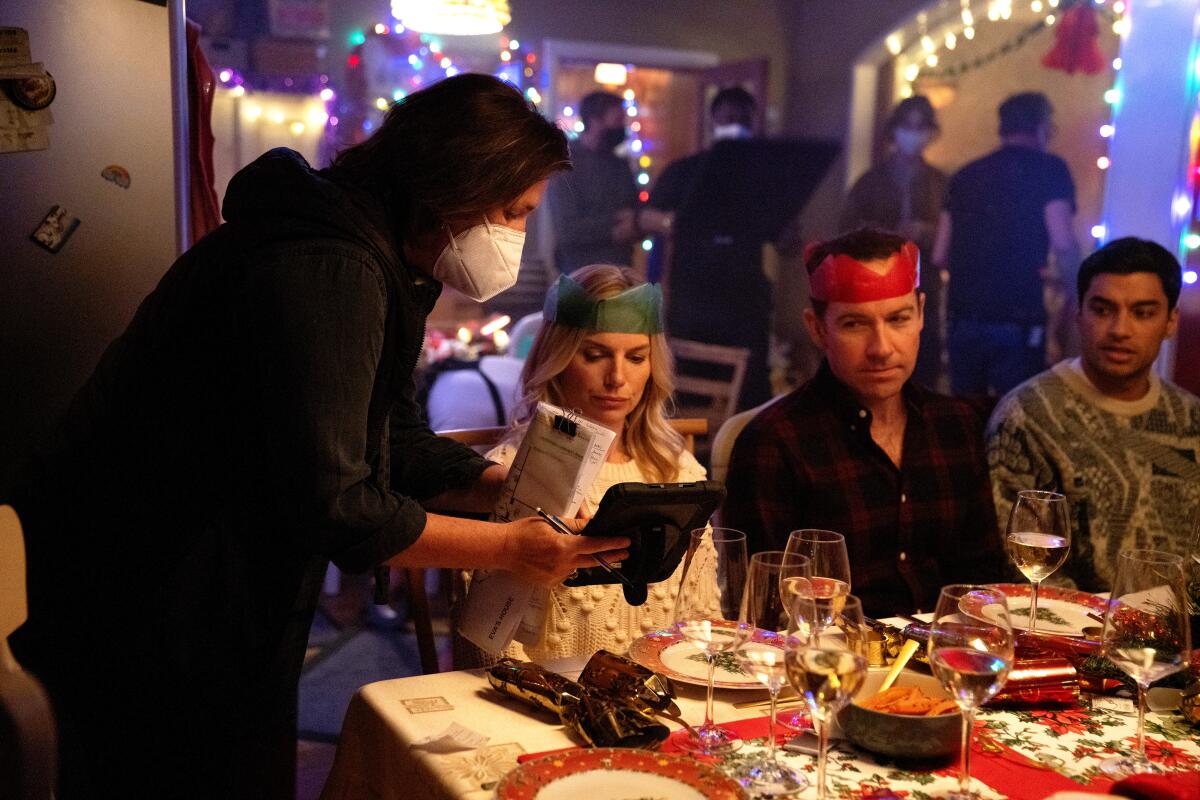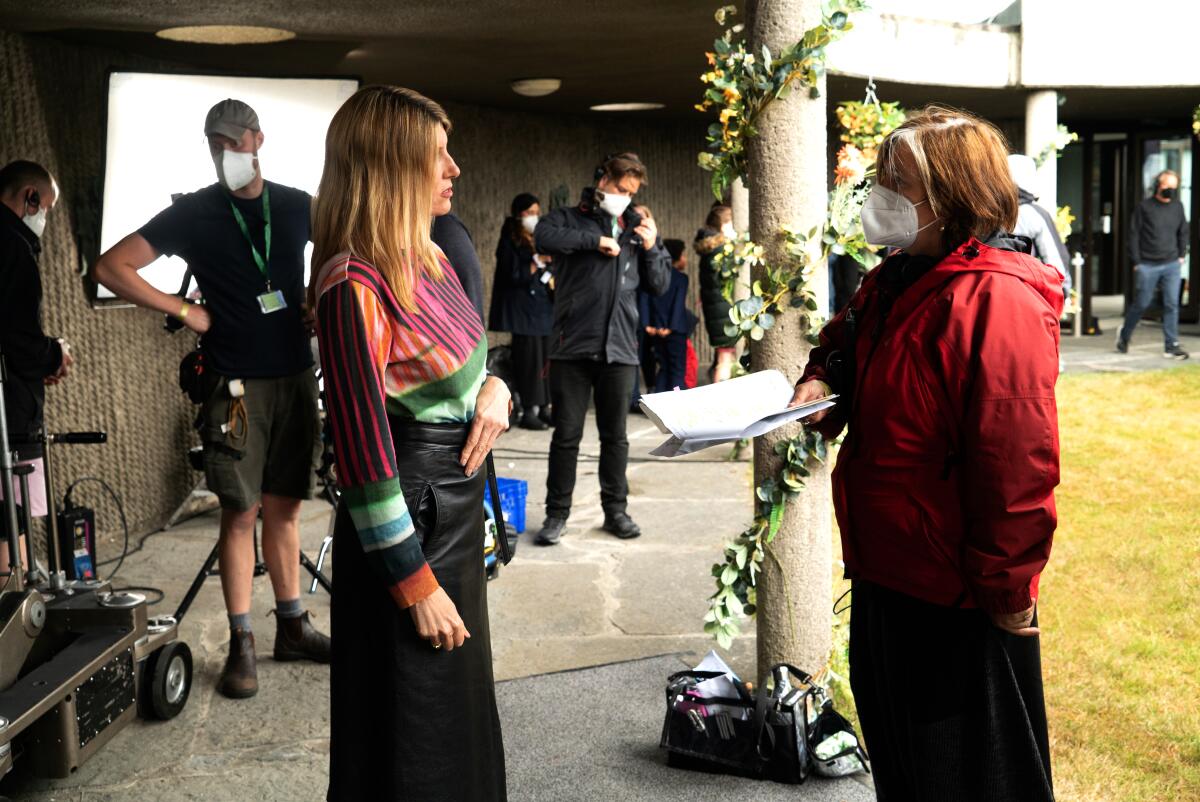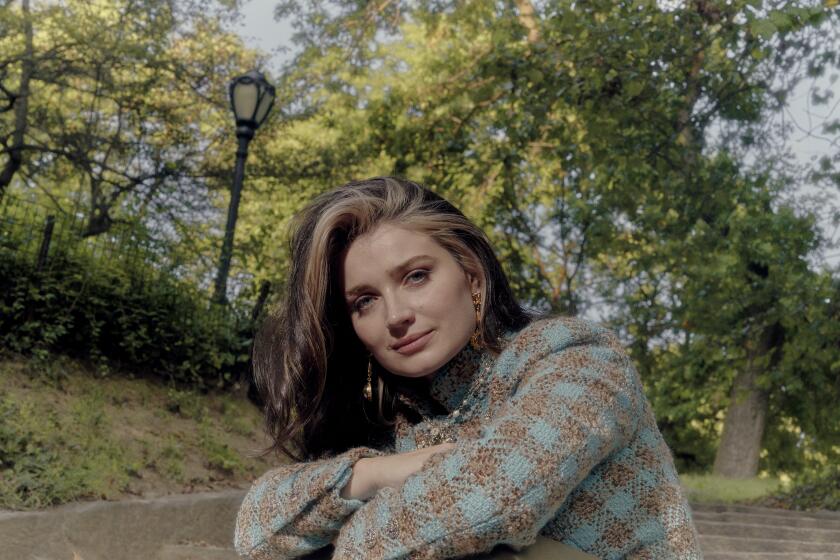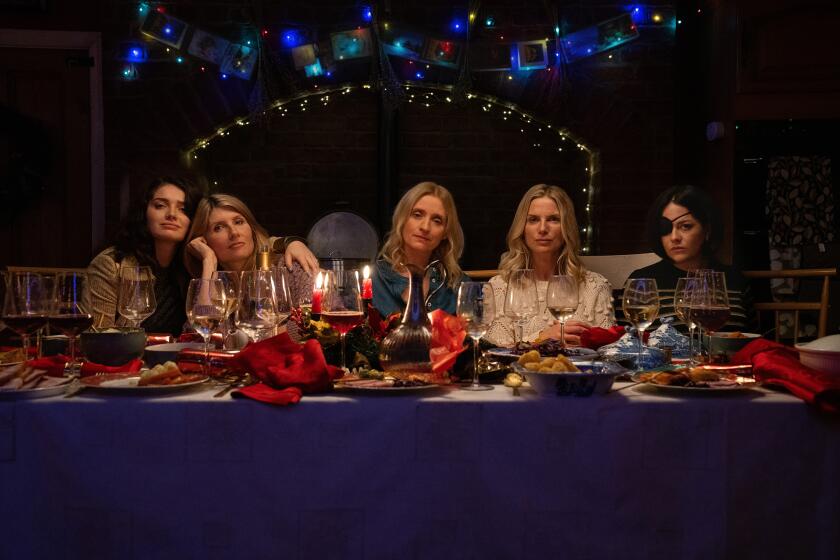Put five actresses on set with a female director and you get — well, a pretty calm set

As Irish director Dearbhla Walsh built an award-winning international career working on such TV dramas as “Fargo” and “Little Dorrit,” she quickly realized that having been raised in a small country town in Ireland gave her a foundational understanding of sprawling ensemble productions set in other countries. “In a way, those stories felt very close to me because they’re about people on the edge,” says Walsh, whose mother made ends meet by transforming their home into a bustling bed and breakfast. “I had a very rich upbringing in the sense of a community and the dysfunction and perception.”
For Walsh, though, Apple TV+’s suburban revenge thriller, “Bad Sisters,” an adaptation of the Belgian series “Clan,” co-written and starring actor-writer Sharon Horgan, was even nearer to home. Not only was “Bad Sisters” shot in Ireland’s capital city, Dublin, but it’s the saga of the tight-knit Garvey sisters, four of whom plot to murder the fifth’s corrosively sadistic husband. “I’ve been incredibly privileged to do a lot of work abroad,” Walsh says. “But this was such an opportunity to tell a story from an Irish filmmaker’s point of view.”
What were the early challenges in preparing this project?
It’s a very complicated story, just to set up the timelines, the various families and the tone. It’s an unfortunate thing to say but it was like in the olden days when if you have two female characters, they had to have two different hair colors in case people got confused as to which one is which. In our case, we had five and they had to look similar, but be different. Then we also had [an insurance investigator’s] wife, and [the gay sister’s] wife. To an international ear initially, they thought every woman with an Irish accent was a sister. So we had to be really clear to introduce the family and the connections.
To help them come off as siblings, you had the cast take a pre-production plunge in their hotel pool. Explain.
This was COVID time, so people weren’t used to touching each other. With sisters, that’s the whole point. You invade each other’s space, connect with each other. So it was about getting everybody used to each other, being underwater, playing, grabbing each other’s legs, just getting comfortable.
Seeing herself in her Becka character, the actor thought playing her would be easy. Not true. “The process of being that open and vulnerable actually became more difficult, because I felt I was giving so much of myself away,” she says.
Also, they ultimately had to jump into the freezing Irish Sea off of Dublin’s famous Forty Foot, for a memorable scene. Is it true that before a single frame of it was filmed, you had them do a practice leap?
Every actress says they can swim — and they can’t. It’s all very well to mess around in the shallow end, but the biggest thing is that there’s nothing like seeing your skin turn blue and your wrinkly bits to make people bond. Everyone has their vulnerabilities, their vanities. And all of us were women of a certain age, which is a nice way of saying we weren’t debutantes.

Even in repose, the sisters seem like they’re in constant motion. Was that by design?
I had a mother who never sat down. And when she sat down, she fell asleep. I don’t think she ever saw a full TV program. I think women by nature, we move. We’re just so active and engaged and our brains are going, just multitasking. So that was part of our intention, that it should feel like it’s in [their] DNA.
How did the largely female cast make “Bad Sisters” a different experience?
I was lucky to work on “Handmaid’s Tale” [which is] a female environment. I’m used to the positivity, the energy and the speed. But part of it was that normally when you’re dealing with an ensemble cast, which I’ve done a lot of — “Penny Dreadful,” “Shameless,” “Fargo” — often people do the scenes then go off to their trailer. [On “Bad Sisters”] the three scenes — the Christmas dinner, the Easter party and the Forty Foot scene — I kept saying to the [assistant director], “Will you push them down the schedule? It’s going to be crazy.” But they were the three most enjoyable sequences, the least hassle. Just the sense — and it sounds twee, but it’s not — of everybody’s positivity, everybody willing each other on. When it came to close-ups, the girls would do a different improvisation each time just to keep the energy going. Their absolute enthusiasm for it, it meant that I really wasn’t managing egos, which happens sometimes.
The Apple TV+ series deal with toxic masculinity yet finds humor amid the contemporary resonance.
Why do you think that was?
There was a sense of how far we’ve come. That we have five lead parts for women. There was such a sense of investment and everybody loves Sharon. Her work ethic is incredible. She’s a mom, has two gorgeous teenage kids, runs a company. She writes. She never stops — especially with the read-throughs. She’s constantly, “Oh, that could be better,” and she always has a fresh take.
Sharon is one of six kids and often when she’s explaining the scene, she references something from her family. This was always a really dark story about sisters, about coercion, abuse and how do you save somebody and what would you do for love. But at the heart of it, it’s really about connection and joy.
More to Read
From the Oscars to the Emmys.
Get the Envelope newsletter for exclusive awards season coverage, behind-the-scenes stories from the Envelope podcast and columnist Glenn Whipp’s must-read analysis.
You may occasionally receive promotional content from the Los Angeles Times.












